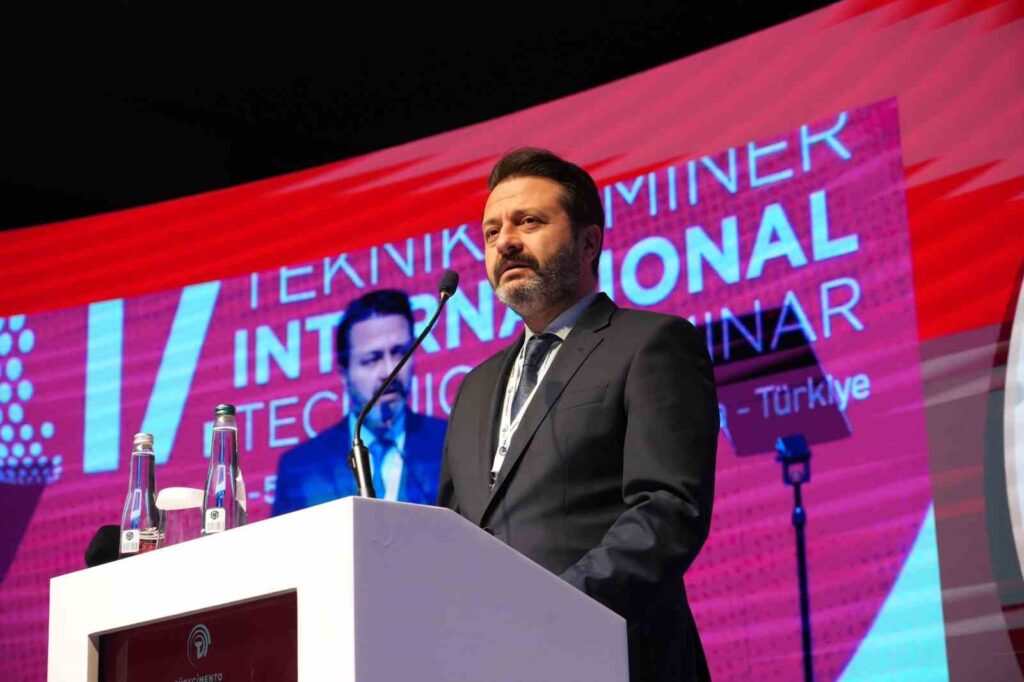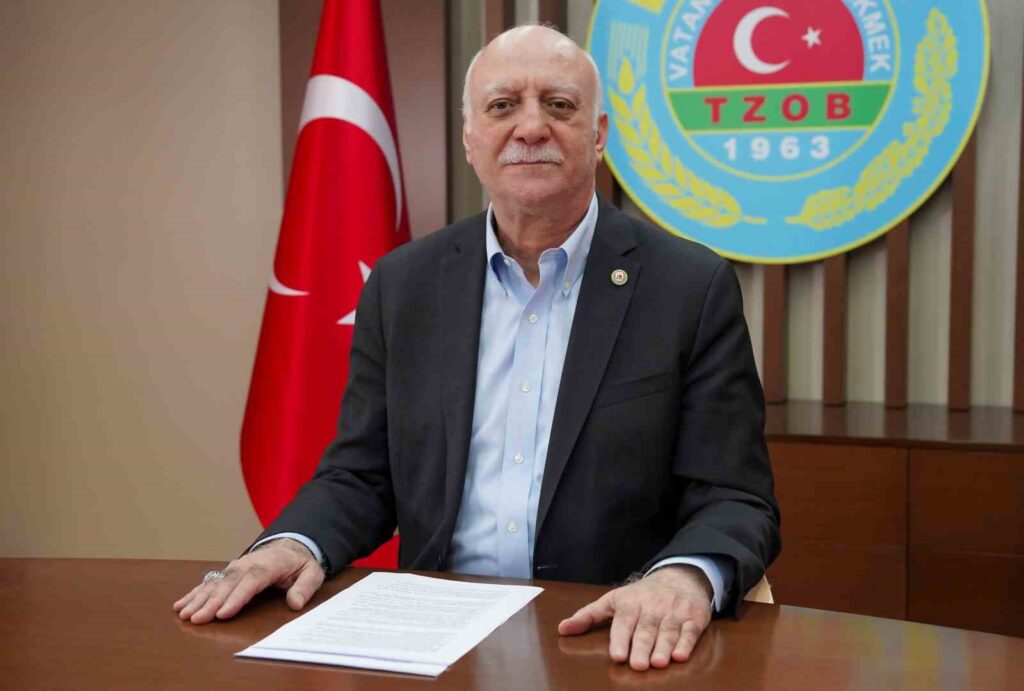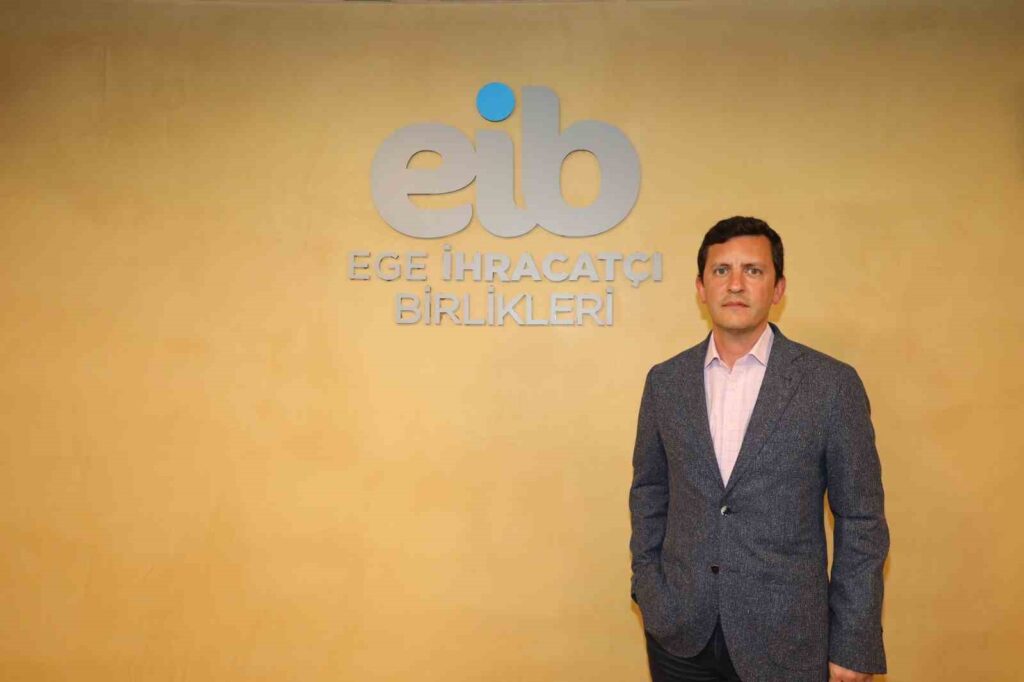While cement sales in the domestic market increased, a decrease was recorded in exports.
The 17th International Technical Seminar and Exhibition organized by TÜRKÇİMENTO has started in Antalya. The opening speech of the event, which brings together the technologies of domestic and foreign companies with the industry, was delivered by the Chairman of the Board Fatih Yücelik, “In 2024 …

The 17th International Technical Seminar and Exhibition organized by TÜRKÇİMENTO has started in Antalya. The event, which brings together the technologies of domestic and foreign companies with the industry, was opened with a speech by the Chairman of the Board, Fatih Yücelik. He stated, “In the period from January to July 2024, cement production in Turkey has increased by 9.1% compared to the previous year. Although cement exports saw a decrease of 19.7% during the same period, domestic sales increased by 16.9%. The year 2023 saw growth in the sector due to the increased demand after the earthquake and the effects of local elections. In the first half of 2024, production growth continued, but a decrease in exports was recorded.”
With its 67-year rooted history, TÜRKÇİMENTO, which has signed the most prestigious event in the Turkish cement sector on a global scale, brought together the cement industry with the participation of both domestic and foreign companies. The program, which will connect the sector with national and international supplier companies from November 2-5, 2024, is being held in Antalya under the theme “Integration of Triple Transformation in the Cement Sector.”
“Participation has reached record levels”
In his opening speech at the seminar, TÜRKÇİMENTO Chairman Fatih Yücelik expressed that the event, which has been organized since 1987, has transformed into an important platform where up-to-date technical issues are discussed and innovative practices are shared over the years. Yücelik stated, “This environment we provide allows companies developing new technology, services, systems, and products for the cement sector to introduce their work to stakeholders in the sector, while sector representatives have the opportunity to closely follow the latest developments. This year, especially the participation of our factory representatives has reached record levels. This intense interest shown in our organization honors all participants as well as our Union. I would also like to thank our sector for this great interest.”
The Turkish cement sector is the leading producer in Europe
Fatih Yücelik pointed out that the Turkish cement sector, with a history of over 110 years, is among the world’s most important producers, stating that the Turkish cement sector, which is the fifth largest producer in the world, is the leading producer in Europe. Expressing that they have said “We are the foundation of Turkey!” on behalf of the sector since the declaration of the Republic, Yücelik noted that production continues with a total of 77 factories, including 56 integrated and 21 grinding facilities spread across Turkey.
Yücelik continued: “We are the second-largest exporter in the world. Our facility investments continue in countries such as the USA, Spain, Mozambique, and Ivory Coast, and as one of the important players in the global cement export market, we export to over 100 countries. Looking at our figures; our sector, which experienced approximately 20% growth in 2023, started 2024 with growth in the domestic market and a decrease in exports. Due to the base effect caused by the earthquake and the impact of local elections, there was significant growth recorded in 2023, but a decrease in domestic sales was observed for the first time in June. In the period from January to July 2024, cement production in Turkey increased by 9.1% compared to the previous year. Although cement exports saw a decrease of 19.7% during the same period, domestic sales increased by 16.9%. The year 2023 saw growth in the sector due to the increased demand after the earthquake and the effects of local elections. In the first half of 2024, production growth continued, but a decrease in exports was recorded. The countries we exported the most during this period were the USA, Italy, Syria, and Albania; in July, we exported the most cement to the USA.”
“This communiqué will provide environmental benefits equivalent to 500 million trees”
Fatih Yücelik stated that they are working on important issues such as adapting to the green transformation, increasing the use of alternative fuels and raw materials, energy efficiency, and digitalization in the cement sector, highlighting the importance of the communiqué published by the Ministry of Environment, Urbanization, and Climate Change regarding the widespread use of Green Cement, which came into effect in March. Yücelik said, “With this communiqué, we can reduce 11 million tons of carbon emissions in our sector over the next 10 years, and by preventing the import of 1.3 million tons of petcoke and coal, we will be able to provide environmental benefits equivalent to 500 million trees. Our sector aims to make significant contributions to Turkey’s net zero emissions target by 2053, and is in close cooperation with the public to increase the consumption of low-carbon cement in the domestic market. Our goal is to facilitate the increased use of such cements in public tenders. Cement is a strategic product beyond economic data. As a sector, we aim to ensure low-carbon production by focusing on more than just production and sales figures. As we outlined in our low-carbon production roadmap, the use of alternative fuels and raw materials, reducing clinker usage, energy efficiency, and technological investments are the most critical issues for our sector.”
12% of energy needs obtained from alternative fuels
Fatih Yücelik reported that in the cement sector, 12% of the energy needs were obtained from alternative fuels using 1.8 million tons of waste in 2023, emphasizing the importance of producing with a focus on energy efficiency as much as using alternative fuels and raw materials for reducing carbon emissions. He stated that “waste heat recovery” facilities have been established to recover gases emitted from the chimney during production to increase energy efficiency, and he continued: “With current figures, energy is produced with a total capacity of 154.5 megawatts across 26 lines in 17 factories, using equity. This figure corresponds to the daily electricity consumption of approximately 618,000 households and is equivalent to the electricity consumption of about 2.5 million people. Considering the share of energy in cement production costs, the environmental and economic returns of waste heat recovery become quite significant.”
“We are shaping our roadmap by revising twin transformation into triple transformation”
TÜRKÇİMENTO Chairman Fatih Yücelik announced that the cement sector will continue to maintain its growth potential in 2024 and 2025, concluding his speech as follows: “While increases in energy and raw material costs are reflected in prices, the use of alternative fuels and carbon-neutralization initiatives stand out as significant steps towards sustainability in the sector. Changes in export markets and growth in domestic demand will shape the future of the sector. In this process, cost management, efficiency increase, and sustainability strategies of companies in the sector are critical for a successful cement industry. By contributing to our country’s net zero target for 2053, our cement sector, which supports Turkey’s Green Development Revolution, adopts an approach that includes societal transformation by integrating into green and digital transformation processes. In this context; by revising twin transformation into triple transformation, we are shaping our roadmap with this understanding. With this goal, we have determined the theme of our event this year as “Triple Transformation.” We plan to be with you with a different concept in 2025.”
“Integration of all three is necessary”
TÜRKÇİMENTO CEO Volkan Bozay stated that the amendment of the communiqué prepared by the Ministry of Environment, Urbanization, and Climate Change regarding the widespread use of Green Cement with low carbon emissions in public procurement contracts is part of the triple transformation, stating: “We are going through a significant change process globally, we are experiencing one of the most important changes in both energy and production after the industrial revolution. Here, the cement sector is also a strategic product, and the transformation of this strategic product is inevitable. The green cement is a subcategory of this triple transformation. With the communiqué issued in March, low clinker ratio cements will begin to be used in public tenders starting at the beginning of next year, with certain conditions set. Therefore, these will significantly affect carbon emissions and lead to their reduction. But of course, as we said here, it’s not just about a particular transformation; integration of all three is necessary. There is a wind of change blowing here, as significant progress is being made globally regarding the reduction of clinker ratios. However, we have reached the action phase regarding how to proceed in terms of both the legislative infrastructure and the investments that companies will make. For this to be feasible, both the green transformation and the digital transformation need to be socially embraced, and the society needs to put this into practice. Our sector seems to be at the forefront of the stakeholders involved in this matter. We have brought together our sector with all suppliers and the public to discuss how we can achieve the triple transformation in the most optimal and healthy way. We will begin to reap the benefits of this in the upcoming period, especially with the green cement that will start at the beginning of this year being the first example of this. However, alternative raw materials are also a very important element for green cement, and increasing the use of alternative fuels from 12% to 50% will not only contribute to low-carbon production in the sector in the upcoming period but will also provide significant data for reducing the country’s emissions.







